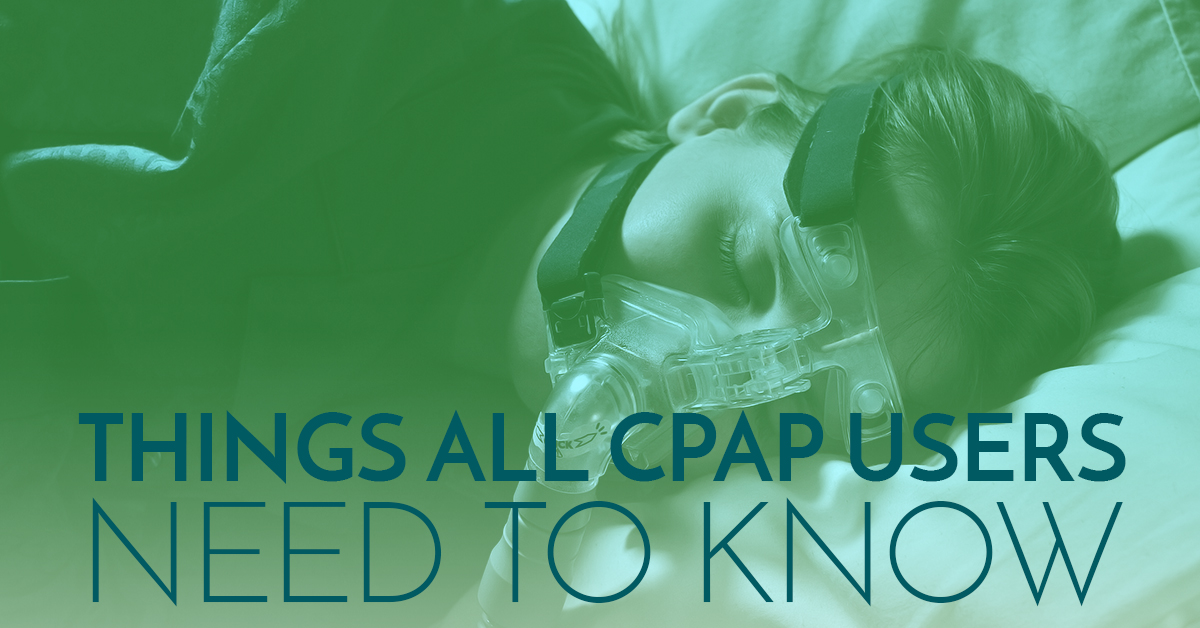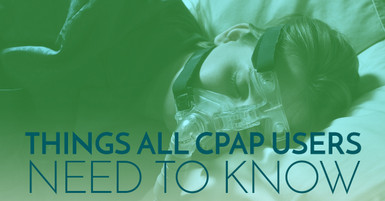Posted by CPAP Liquidators on Apr 19th 2018
Things All CPAP Users Need to Know

No matter if you’re new to CPAP therapy or you’ve been using it for years, there are some pieces of information you need to know about it to fully understand your therapy. With that in mind, we’ve gathered some of the most important things all CPAP users should know. When you have this information, you’ll be able to get the most out of your CPAP treatment. If you’re looking for a new or refurbished CPAP device, call CPAP Liquidators today. Our friendly team will be happy to answer any questions you have!
APAP vs. CPAP
The main difference between APAP (also known as Auto CPAP) and a standard CPAP machine is that APAP systems will automatically adjust air pressure to match with your breathing. A CPAP differs from this because it stays at a consistent pressure. How much air pressure you require can change based on a variety of factors, such as your weight, overall health, stress levels, and what position you sleep in. Auto CPAPs operate with the air pressure at its lowest possible setting while still being effective in preventing apneas, adjusting as needed throughout the night. To change the pressure on a standard CPAP machine, you’ll likely have to go back to your doctor so they can adjust it based on your compliance data. This makes an APAP a more ideal option for many therapy users, as it can ensure they are receiving the correct pressure they need for it to be effective for their condition.
Cleaning is Key
Due to the nature of a CPAP machine, it requires a lot of cleaning to prevent health issues from cropping up. That is because mold and bacteria can accumulate, thanks to the moist conditions inside of a CPAP system. Without cleaning, you could develop a sinus infection or pneumonia, among other illnesses. To avoid this, it it recommended that you clean your mask and tube on a daily basis, and the humidifier chamber and headgear once a week. All it takes is some warm water and unscented mild soap to get them cleaned properly. Never use vinegar or bleach on your CPAP machine or any of its equipment. There are also CPAP Sanitizer devices that can do this with a touch of a button for stress-free maintenance.
Options to Suit Your Comfort
There are many people who are only able to breathe through their mouths, and this is typically due to an untreated form of sleep apnea. Through CPAP therapy, you can reteach your body to sleep with your mouth closed. While a full-face mask is often the first mask CPAP users are prescribed when starting CPAP treatment, there are some other options available to match how you sleep and what is most comfortable to you. There are nasal pillow and other minimally designed masks that can still provide most people with the therapy they need, without being bulky and cumbersome to wear. Consult with your doctor to see what type of mask they would recommend for your treatment.
Replace Seal
The only way for CPAP treatment to work as intended is if your mask is able to make an effective seal with your face. If you’ve had a mask for a while, and it doesn’t seem to make a seal like it used to, tightening your headgear will only make you more uncomfortable. Instead, replace the pillow or cushion to fix this issue. Seals wear down pretty quickly, and when they do, it can cause irritating and loud leaks. Not only will this disturb your sleep, it will prevent you from getting the airflow your therapy requires. Keep a replacement seal on hand as a backup in case you need it in a pinch. Most insurance plans will cover two nasal cushions/pillows and one full face cushion per month.
Compatibility
Despite what you may think, any mask is compatible with any CPAP machine. That is because masks, tubes, and machine connections are universal across brands and styles. If you’re looking to buy a new machine but want to keep your mask, rest assured it will work properly no matter which model you choose, and the same goes for replacing your tubing. This allows you the freedom to find the perfect combination to make the most of your CPAP treatment.
If It Doesn’t Fit
If you are trying to replace a mask or machine, but you’re finding the hose just won’t fit correctly, there is likely an easy solution. Check both ends of the tube you’re connecting. There is probably a piece of plastic from your old mask still stuck in there. You can tell if this is the case, as both ends of the breathing tube should have rubber connectors, with no hard plastic attached. Pop it out, and your new mask should slot in perfectly.
Water Matters
Many people have made the mistake of thinking they can just use standard tap water in their CPAP machine, but it’s important you use distilled water instead. Due to the minerals naturally present in tap water, it can cause a CPAP machine’s humidifier chamber to rust and white mineral deposits to accumulate within it. This will shorten the life of both the humidification chamber itself, as well as the CPAP machine as a whole. If you’re on vacation and can’t use distilled water, tap water is an acceptable substitute for a few days, but it’s important that you switch back when you get home. If you’re in an area where the tap water is not drinkable, use bottled water for your CPAP machine.
There are many different factors that come into play that can prevent you from getting the CPAP treatment you need. Hopefully, you find these tips useful as you go through your therapy. If you are in the market for a new CPAP mask, whether it’s a full-face or nasal model, CPAP Liquidators has you covered. Check out our wide variety of brands and styles to find the perfect fit for you. If you have any questions, please don’t hesitate to give us a call. One of our knowledgeable and friendly associates will be happy to help in any way they can.

